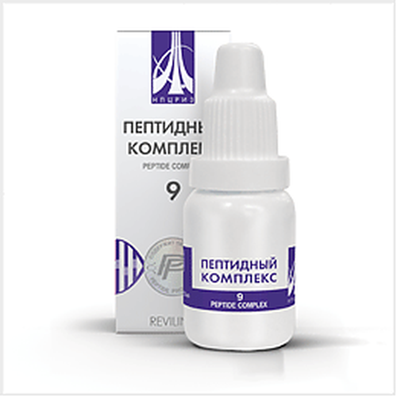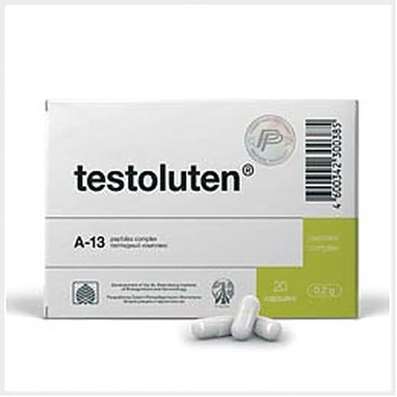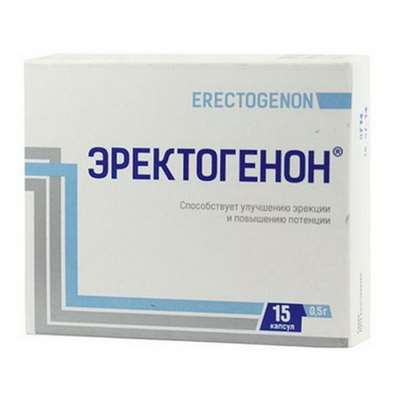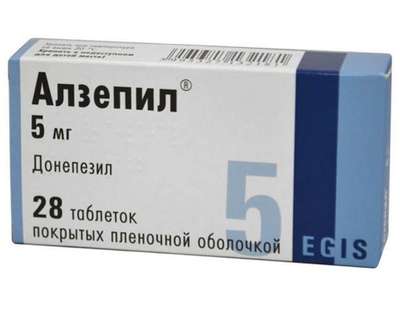Instruction for use: Indapamide retard 1,5 mg
I want this, give me price
International Nonproprietary Name (INN): Indapamide
Pharmaceutic group: Hypotensive
Presentation:
Film-coated, prolonged action tablets 1.5 mg, ¹30.
Available with prescription
Indications for Indapamide
Indapamide is a thiazide-like diuretic drug marketed by Servier, generally used in the treatment of hypertension, as well as decompensated cardiac failure. The US trade name for indapamide is Lozol. Indapamide is marketed as Natrilix outside the US, and as Insig in Australia. Combination preparations with perindopril, lisinopril (an ACE inhibitor antihypertensive) are also available.
INDICATIONS: Hypertension and edema due to congestive heart failure. Indapamide has been proven in the HYVET trial to reduce stroke and all cause mortality when given with or without perindopril to people over the age of 80 for the treatment of hypertension.
The adult DOSAGE in Russia: is from 1.5 to 2.5 mg, orally and once daily, usually in the morning.
CONTRAINDICATIONS. Indapamide is contraindicated in known hypersensitivity to sulfonamides, severe renal failure, hepatic encephalopathy or severe hepatic failure and hypokalemia (low blood potassium levels). There is insufficient safety data to recommend indapamide use in pregnancy or breastfeeding.
INTERACTIONS. Caution is advised in the combination of indapamide with lithium and nonantiarrhythmic drugs causing wave-burst arrhythmia (astemizole, bepridil, IV erythromycin, halofantrine, pentamidine, sultopride, terfenadine, vincamine).
PRECAUTIONS. Monitoring of potassium and uric acid serum levels is recommended, especially in subjects with a predisposition or a sensitivity to hypokalemia and in patients with gout.
ADVERSE EFFECTS. Commonly reported adverse events are hypokalemia (low potassium levels), fatigue, orthostatic hypotension (blood pressure decrease on standing up) and allergic manifestations.
Trade name of the drug – Indapamide retard
Dosage Form: prolonged action tablets coated membrane shell.
Active substance:
Indapamide - 1.5 mg;
excipients: hypromellose - 77.36 mg lactose monohydrate (milk sugar) - 119.14 mg Colloidal silicon dioxide (Aerosil) - 1.0 mg magnesium stearate - 1.0 mg hypromellose - 2.24 mg lactose monohydrate - 2.88 mg of polyethylene glycol - 0.80 mg titanium dioxide - 2.08 mg.
Description:
Tablets are biconvex shape, white film-coated. On cross-section - the inner layer of white or white with Valium a color shade.
Pharmacotherapeutic group: Hypotensive
ATX code: C03BA11
Pharmacological Properties of Indapamide
Pharmacodynamics
hypotensive agent, thiazide diuretic with moderate in intensity and prolonged in duration, benzamide derivatives. Salureticheskim has a moderate and diuretic effects that are associated with the blockade of reabsorption of sodium, chlorine, hydrogen, and to a lesser extent potassium ions in cortical proximal tubule, and distal tubule of the nephron segment. Vasodilating effect and a decrease in total peripheral vascular resistance are based on the following mechanisms: decrease vascular reactivity to norepinephrine and angiotensin II; an increase in the synthesis of prostaglandins that have vasodilating activity; current inhibition of calcium ions into smooth muscle vascular wall. It lowers the tone of smooth muscles of arteries, reduces the total peripheral vascular resistance. It helps to reduce hypertrophy of the left ventricle of the heart. At therapeutic doses it has no effect on the lipid and carbohydrate metabolism (including patients with concomitant diabetes). The antihypertensive effect develops at the end of the first / second week of the beginning of taking the drug at a constant and maintained for 24 hours on a background of a single dose.
Pharmacokinetics
drug after ingestion completely but gradually absorbed from the gastrointestinal tract. Bioavailability - high (93%). Eating slows down the speed, but does not affect the absorption of completeness. Maximum plasma concentration achieved after 12 hours after a single oral dose. Equilibrium concentration is achieved after 7 days of regular admission. Preparation 70-80% bound to plasma proteins. It has a high volume of distribution, passes through gistogematicalkie (including placental) barrier, enters the breast milk. It is metabolized in the liver. The half-life of indapamide on average 18-26 hours. Excreted by the kidneys (80%), mainly in the form of metabolites through the intestine - 20%. In patients with renal insufficiency The pharmacokinetics does not change. Not accumulates.
Indications for Indapamide
Arterial hypertension.
Contraindications for Indapamide
Hypersensitivity to indapamide, to other sulfonamide derivatives or other components of the drug, acute cerebrovascular accident, severe renal dysfunction (creatinine clearance less than 30 ml / min) and / or the liver (including with hepatic encephalopathy), hypokalaemia, pregnancy, lactation, age 18 years (effectiveness and safety have been established). These tablets contain lactose monohydrate (milk sugar), in connection with this drug should not be taken by patients with rare hereditary conditions such as lactose intolerance, lactase deficiency or glucose-galactose malabsorption.
Precautions: Apply with caution in patients with diabetes mellitus, hyperuricemia (especially accompanied by gout and urate nephrolithiasis), hyponatremia, and other violations of water-electrolyte balance, moderate liver and / or kidney failure, chronic heart failure, hyperparathyroidism in patients with an increased QT interval on an electrocardiogram or receiving the combination therapy as a result of which it is possible lengthening of the interval QT (astemizole, erythromycin (iv), pentamidine, sultopride, terfenadine, vincamine (w / w), antiarrhythmic drugs IA class (quinidine, dizopramid) and III-class (amiodarone, bretylium tosylate ).
Pregnancy and lactation
The drug is not recommended for use during pregnancy as diuretics may cause fetoplacental ischemia with the risk of fetal malnutrition. Indapamide should not be used to treat physiological edema of pregnancy.
Indapamide is excreted in breast milk. Given the possibility of occurrence of adverse events in infants, breast-feeding during treatment is not recommended.
Indapamide Dosage and Administration
The inside is not liquid, drinking plenty of fluids, regardless of the meal, preferably in the morning hours at a dose of 1.5 mg (1 tablet) per day. If after 4-8 weeks of treatment is not achieved the desired therapeutic effect, the dose of the drug is not recommended to increase (increased risk of side effects without increasing the antihypertensive effect). Instead, the drug regimen is recommended to include another antihypertensive drug, which is not a diuretic. In cases where treatment is necessary to start from receiving the two drugs, the dose indapamide retard remains at 1.5 mg once daily in the morning sutki.U elderly patients should be monitored plasma concentration of creatinine according to the age, weight and gender, the drug can be used in elderly patients with normal or slightly impaired renal function (see. also "Contraindications").
Side effect ofIndapamide
The majority of adverse reactions (clinical and laboratory parameters) harakter.Chastota are dose-dependent side reactions that may be caused by thiazide diuretics, including indapamide, as shown in the following grades: very often (> 1.10); common (> 1/100, <1/10); uncommon (> 1/1000, <1/100); rare (> 1/10000, <1/1000); very rare (<1/10000); unspecified frequency (frequency can not be calculated from the available data).
From the circulatory and lymphatic systems. Very rare: thrombocytopenia, leukopenia, agranulocytosis, aplastic anemia, hemolytic anemia.
On the part of the central nervous system. Rare: dizziness, fatigue, headache, paresthesia.
Cardio-vascular system. Very rare: arrhythmia, lowering blood pressure.
From the digestive system. Uncommon: rvota.Redko: nausea, constipation, dry rtu.Ochen rare: pancreatitis.
From the urinary system. Very rare: renal insufficiency.
On the part of the liver and biliary tract. Very rare: abnormal liver function.
Unspecified frequency: the possibility of the development of hepatic encephalopathy in case of hepatic insufficiency.
For the skin. Hypersensitivity reactions, mainly dermatologic, patients with predisposition to allergic and asthmatic reactions: Common: maculopapular syp.Nechasto: hemorrhagic vasculitis. Very rare: angioneurotic edema and / or urticaria, toxic epidermal necrolysis, Stevens-Johnson syndrome. Unspecified frequency: possible deterioration in the presence of an acute form of disseminated lupus erythematosus. Cases of photosensitivity.
Laboratory findings. In clinical studies, hypokalemia (potassium content of ≤3,4 blood plasma mmol / l) was seen in 10% of patients and 3.2 mmol / l - 4% of patients after 4-6 weeks of treatment. After 12 weeks of treatment, the level of potassium in plasma decreased by an average of 0.23 mmol / l. Very rarely hypercalcemia. Unspecified frequency: hypokalemia; Hyponatremia, accompanied by hypovolemia, dehydration and orthostatic hypotension. Simultaneous loss of chloride ions may lead to compensatory metabolic alkalosis, but the incidence of alkalosis and its expression is not significant; Increasing the level of uric acid and plasma glucose.
overdose
Symptoms include nausea, vomiting, weakness, poor gastrointestinal function (nausea, vomiting), the water-electrolyte disturbances, marked reduction in blood pressure, dizziness, drowsiness, confusion, respiratory depression, polyuria, oliguria up to anuria, patients with impaired liver function may develop hepatic coma.
Treatment: gastric lavage and / or administration of activated charcoal, followed by restoration of normal water and electrolyte balance, symptomatic therapy. No specific antidote.
Interaction
Not recommended combinations of an application with drugs litiyavozmozhno increase in the concentration of lithium ions in the plasma due to decreased excretion from the body by the kidneys, accompanied by the appearance of signs of overdose (nephrotoxicity), as well as in compliance with a salt-free diet (decreased elimination of lithium ions by the kidneys).
Combinations requiring special attention.
1. Medications that can cause heart rhythm disturbance of the type "pirouette": antiarrhythmics class IA (quinidine, gidrohinidin, disopyramide), antiarrhythmics class III (amiodarone, dofetilide, Ibutilide, bretylium tosylate), sotalol, certain neuroleptics: phenothiazines (chlorpromazine , tsiamemazin, Levomepromazine, thioridazine, trifluoperazine), benzamides (amisulpride, sulpiride, sultopride, tiaprid), butyrophenones (droperidol, haloperidol), other (bepridil, cisapride, difemanil, erythromycin (intravenous (i / v)), halofantrine, mizolastine , pentamidine, sparfloxacin, moxifloxacin, vincamine (w / w), astemizole. The simultaneous use of any of these medications, especially against hypokalemia, increase the risk of ventricular arrhythmias of the type "pirouette". Before starting combination therapy with indapamide retard and the above preparations should control the content of potassium in the blood plasma and, if necessary, it is recommended to adjust:. monitoring clinical condition of the patient, as well as the content of blood plasma electrolytes and EKG. In patients with hypokalemia is necessary to use drugs, do not provoke development of "pirouette" type of arrhythmia.
2. When concomitant administration of non-steroidal anti-inflammatory drugs (NSAIDs) (for systemic use), including selective cyclooxygenase-2 (COX-2), high dose salicylic acid (3 g / day or more) is possible: reduction of the antihypertensive effect of indapamide, the development of acute renal failure in dehydrated patients (due to a decrease in glomerular filtration rate). At the beginning of therapy with indapamide is necessary to restore the water and electrolyte balance, monitor renal function.
3. Angiotensin converting enzyme (ACE) inhibitors in patients with hyponatremia (especially in patients with renal artery stenosis) increase the risk of hypotension and / or acute renal failure. Patients with hypertension and possibly with hyponatremia due to diuretics, you must:
- Stop taking the drug for 3 days prior to initiation of therapy with ACE inhibitors and go to therapy kaliynesberegayuschimi diuretics;
- Or initiate therapy with ACE inhibitors, low dose, followed by a gradual increase in the dose if necessary. In the first week of therapy with ACE inhibitors it is recommended to control the concentration of plasma creatinine.
4. Other medications that can cause hypokalaemia:
- Amphotericin B (w / w), - and gluco mineralokortikosteroidy (when assignment system) (see the same information in the "Combinations of drugs that require attention.") -. Tetrakozaktid (see also section information "Combination drugs requiring attention ") - laxatives that stimulate bowel motility.
Together with the admission of the above indapamide drugs increases the risk of hypokalaemia (additive effect). If necessary, control and adjust the content of potassium ions in the blood plasma.
5. Simultaneous treatment with baclofen enhances the antihypertensive effect of indapamide.
6. Cardiac glycosides: hypokalemia increases the toxic effects of cardiac glycosides (glycoside intoxication). With simultaneous use of cardiac glycosides and indapamide should control the content of potassium ions in the plasma, ECG, and, if necessary, adjust therapy.
Combinations of drugs that require attention.
1. Concomitant use of potassium-sparing diuretics (amiloride, spironolactone, triamterene) suitable for some patients, but did not rule out the possibility of hypokalemia. Against the background of diabetes mellitus or renal insufficiency may develop hyperkalemia. It is necessary to control the content of potassium ions in the plasma, ECG, and, if necessary, adjust therapy.
2. Metformin increases the risk of lactic acidosis, because possible development of renal failure in patients receiving diuretics, particularly "loop". Metformin should not be taken in the blood plasma creatinine concentration of greater than 15 mg / l (135 mol / l) in men and 12 mg / l (110 mol / L) in women.
3. The simultaneous use of large doses of iodinated contrast agents in the background and hypovolemia diuretics increases the risk of developing acute renal failure. Recommended prior to use drugs to restore the water and electrolyte balance of the blood.
4. Tricyclic antidepressants (imipraminpodobnye) and antipsychotics increase the hypotensive effect and risk of orthostatic hypotension (additive effect).
5. Preparations containing the calcium salt increases the risk of hypercalcemia due to decreased renal excretion of calcium ions.
6. Cyclosporine, tacrolimus - risk of increasing the concentration of creatinine in the blood plasma concentration of unchanged circulating cyclosporin.
7. glucocorticosteroids drugs tetrakozaktid (when administered systemically) reduce the hypotensive effect (delay sodium and fluid).
special instructions for Indapamide
Violations pecheni.U function in patients with hepatic insufficiency, the appointment of thiazide diuretics may develop hepatic encephalopathy, particularly in case of violation of water-electrolyte balance indicators. In its development of diuretics should be discontinued.
Photosensitivity. When using thiazide diuretics cases of photosensitivity reactions noted. In the case of the development of the drug should be discontinued. Against the background of therapy with indapamide retard necessary to protect the exposed areas of the body from sunlight and artificial UV light.
Water and electrolyte balance. The content of sodium ions in plasma: all diuretic drugs can cause hyponatremia. The content of sodium ions in the plasma to be measured before drug treatment Indapamide retard and then regularly during the treatment period. Determination of the content of sodium ions in the plasma should be carried out prior to therapy with indapamide retard, as well as during therapy. It is important to regularly check the content of sodium ions in plasma, because originally hyponatremia may be asymptomatic. The most careful control of the content of sodium ions is shown in elderly patients and patients with liver cirrhosis.
The content of potassium ions in the plasma: the greatest risk in the treatment of thiazide diuretics is hypokalemia. Special attention to the prevention of hypokalemia (less than 3.4 mmol / l) should be paid attention to in the following cases: debilitated patients and / or receiving other therapy (antiarrhythmic drugs and agents that may prolong the QT interval on an electrocardiogram), in the elderly, patients with cirrhosis of the liver, peripheral edema, and ascites; with coronary artery disease and chronic heart failure. Hypokalemia in these patients increases the toxic effects of cardiac glycosides and increased risk of arrhythmia. High-risk group also includes patients with prolonged QT interval on an electrocardiogram. Hypokalemia is a predisposing factor of severe arrhythmias, especially arrhythmias such as "pirouette", which can be fatal. In all the cases it is necessary to regularly monitor the content of potassium in the blood plasma. The first definition of the content of potassium in the blood plasma to be held in the first week of therapy with indapamide retard.
In identifying hypokalemia should conduct appropriate therapy.
The content of calcium ions in the blood plasma, thiazide and thiazide diuretics can decrease the excretion of calcium by the kidneys, resulting in minor and / or temporary hypercalcaemia. Severe hypercalcemia in patients receiving the drug indapamide retard may be due to previously undiagnosed hyperparathyroidism.
It is necessary to stop taking the diuretic before the test function of the parathyroid glands.
Concentration of glucose in plasma: Patients with diabetes, especially in the presence of hypokalemia, requires monitoring of plasma glucose concentration.
Uric acid: in patients with hyperuricemia may increase the frequency of seizures or exacerbation of gout.
Kidney function and diuretic drugs. Thiazide and thiazide diuretics are effective, in full, only patients with normal or slightly reduced (serum creatinine in adults less than 25 mg / L or 220 mmol / l) function pochek.Vyrazhennaya hypovolemia can lead to acute renal failure (speed reduction glomerular filtration), which may be accompanied by increased concentrations of urea and creatinine in plasma. In normal transient functional kidney renal failure usually takes place without consequences. When existing renal failure patient's condition may deteriorate.
Elderly patients. Recommended Regular monitoring the concentration of creatinine and potassium in the plasma, taking into account the patient's age, weight and sex. Indapamide retard may be administered to elderly patients with preserved or slightly impaired renal function (creatinine clearance below 30 ml / min).
Athletes. Indapamide retard can give a positive result during the doping control.
Effects on ability to drive vehicles and other complex mechanical means. The use of indapamide retard does not lead to a breach of psychomotor reactions. However, some patients in response to a decrease in blood pressure may develop a variety of individual reactions, especially at the beginning of therapy or when added to the therapy of other antihypertensive agents. In this context, at the beginning of treatment with indapamide retard it is not recommended to drive vehicles or other complex mechanisms that require attention.
Release form of Indapamide
Tablets are of the prolonged action film-coated 1.5 mg.
10 tablets in blisters of PVC film and aluminum foil.
1, 2, 3, 4 or 5, the contour of cellular packages with instructions for medical use in a pile of cardboard.
Storage conditions of Indapamide
In a dry, dark place at a temperature no higher than 25 ° C.
Keep out of the reach of children.
Shelf life of Indapamide
3 years.
Do not use beyond the expiration date printed on the package.
Conditions of supply of Indapamide from pharmacies
With prescription.

 Cart
Cart





